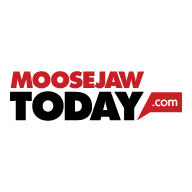The Royal Bank of Canada says the City of Moose Jaw is well-positioned financially for the future, but how does it stack up against other Saskatchewan cities of similar size?
Greg McIntyre, senior commercial account manager for the Royal Bank of Canada, gave a presentation to city council during one of its 2020 budget meetings looking at three financial benchmarks. Reported below is that presentation.
Economic report
McIntyre based his assessment of the City of Moose Jaw’s financial health on three benchmarks, or ratios: operating surplus/deficit as a percentage of operating revenue, debt burden, and reserves to operating revenue. Each ratio uses a formula to determine how the municipality compares to six Saskatchewan municipalities and the province as a whole.
A report given to council looked at each area.
Operating surplus as a percentage
“The City of Moose Jaw’s surplus to operating revenue is strong and is likely to improve with changes made to reserve investments earlier in 2019, said McIntyre, adding it’s expected that additional interest revenue from these changes will further reduce pressure on the operating surplus in 2020.
Any number above the 10-per-cent benchmark is considered strong and anything over 20 per cent is considered very strong, according to the report.
Based on the formula of operating surplus over operating revenue, Moose Jaw’s percentage is 11.3 per cent. In comparison, Weyburn’s ratio is 16.1 per cent; Swift Current’s is 5.4 per cent; North Battleford’s is minus-1.3 per cent; Yorkton’s is 11.9 per cent; Estevan’s is 6.7 per cent; Regina’s is 13.2 per cent; and the province’s ratio is minus-3.1 per cent.
Debt burden
A municipality’s ability to repay its debt and associated interest is crucial to its longevity and stability, McIntyre said. The debt burden ratio measures the portion of operating revenue needed to service the annual financing obligations. Anything below the 15-per-cent benchmark is considered strong and stable.
Based on the formula, Moose Jaw’s percentage is 8.3 per cent. In comparison, Weyburn’s debt burden is 0.1 per cent; Estevan’s is 17.3 per cent; North Battleford’s is 12.5 per cent; Swift Current’s is 13.3 per cent; Yorkton’s is 6.6 per cent; Regina’s is 3.9 per cent; and the province’s is 17.3 per cent.
Moose Jaw is in a comfortable position and has plenty of excess capacity if a financial shock happens, said McIntyre. The municipality has done well to take advantage of some of the lowest borrowing rates available in a century.
City council would have to borrow another $75 million over 15 years and at current rates to have its debt burden climb over the 15-per-cent benchmark threshold. Conversely, if a financial shock resulted in a drop in annual revenue of $39 million, that would also increase the debt burden over 15 per cent.
Reserves as a percentage of operating revenue
Reserves or accumulated surplus funds provide much-needed ballast to help absorb economic shocks, weather a regional recession or be relied upon to fund capital projects when lending rates are a barrier to borrowing, said McIntyre.
Anything above 30 per cent of a municipality’s annual operating revenue is considered strong and higher than 50 per cent is very strong, the report said.
Based on the ratio, Moose Jaw’s percentage is 52.9 per cent. In comparison, Weyburn’s is 103.3 per cent; Estevan’s is 33.6 per cent; North Battleford’s is 73.3 per cent; Swift Current’s is 32.9 per cent; Yorkton’s is 29.5 per cent; Regina’s is 29.9 per cent; and the province’s is 50.7 per cent.
Southern Saskatchewan has experienced economic headwinds due to poor conditions in agriculture and the energy sector, but Moose Jaw has admirably managed its reserves above the 50-per-cent threshold, McIntyre added. Should an economic downturn last too long, council should anticipate the tax base to shrink and more pressure to be put on the surplus, exacerbated by an inability to replenish reserves.
The next regular council meeting is Monday, Jan. 13, 2020.




